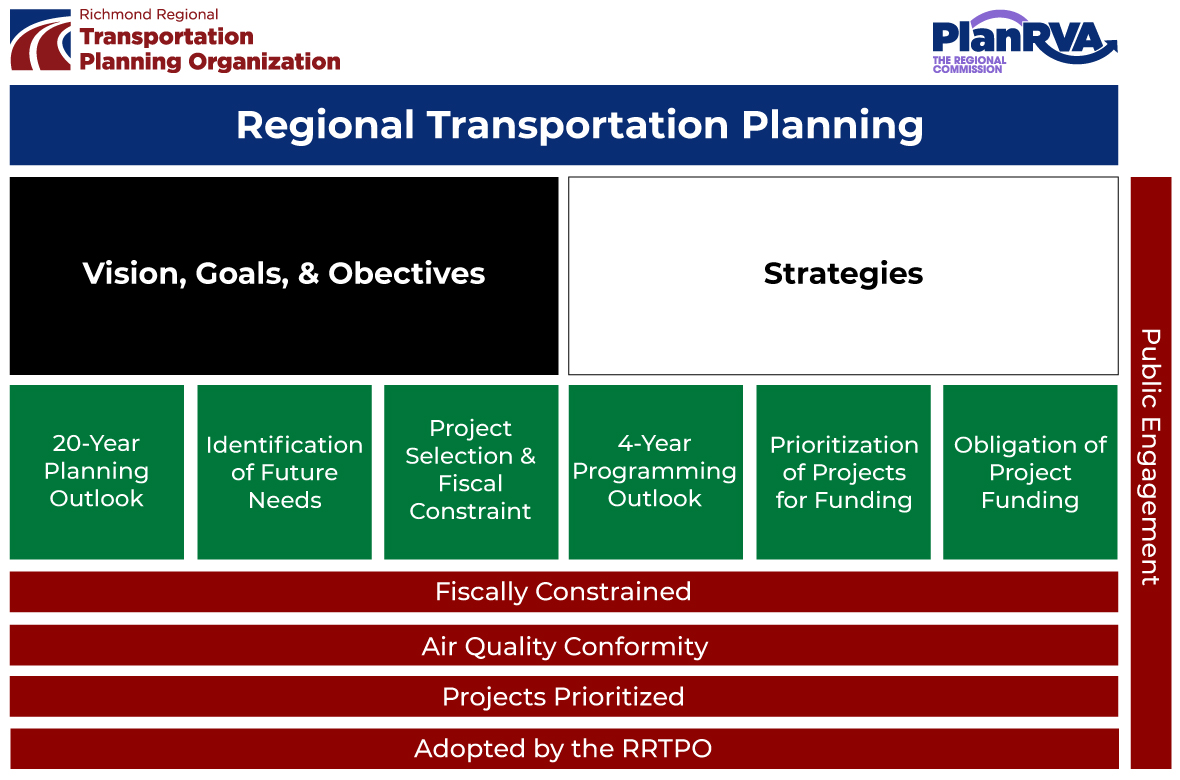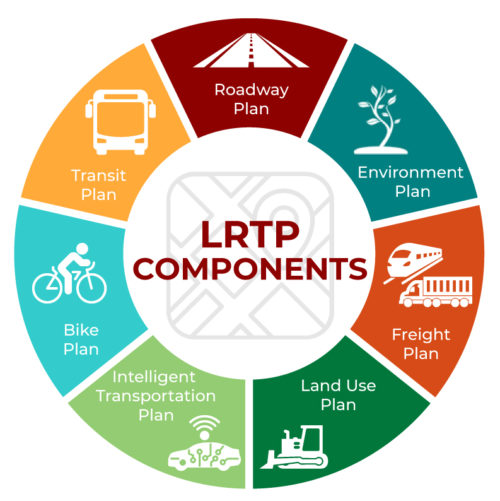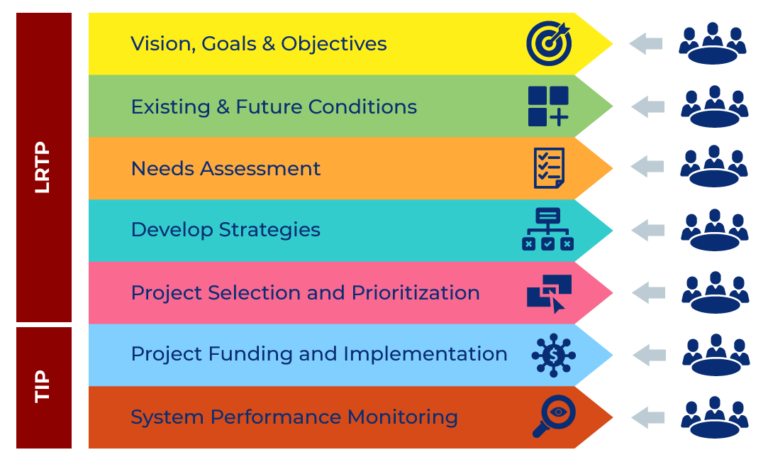all about transportation
How Does it All Fit Together?
When you put the pieces of transportation planning together it shows the relationship between the key elements.

Planning Considerations
A regional transportation plan has a general set of elements that should be considered when planning to improve all transportation in the region.

Roadway Planning
The roads in our region consist of major U.S. interstates and state highways, along with regional and local arterials and connector roads. These all depend on continuous maintenance, monitoring and management to help transport people, goods and services effectively in our area.
Environment Planning
Transportation planning and policies associated with transportation have an impact on the environment. By federal law, the Richmond Regional TPO is responsible for ensuring that the region's plans for transportation infrastructure conform to National Ambient Air Quality standards. It is also our responsibility to ensure that the water quality of lakes, the James River and other streams, as well as wildlife habitats and other natural resources, are considered as part of the decision-making process.
Freight Planning
From the port and trains to planes and highways, Richmond is both a hub and a throughway for industries up and down the eastern seaboard. With this much freight moving through the area, challenges around congestion, air quality and infrastructure are bound to arise. Finding solutions for future growth is a key component of planning.
Land Use & Urban Design Planning
We must consider both cities and countrysides as we plan for the future of transportation in the Richmond region. Keeping an eye on growth while preserving current communities will set up our area for development that will support all modes of transportation.
Intelligent Transportation Systems (ITS)
The combining of leading-edge information and communication technologies with transportation and traffic management systems leads to improved safety, efficiency, and sustainability of our transportation network. Reducing traffic congestion and enhancing driver experiences are just a few of the benefits. Developments in technologies present great opportunities to transform the way that we manage transportation planning.
Bike/Pedestrian Planning
Bicycling and walking are affordable and environmentally friendly modes of transportation that should be safe and attractive travel options for everyone. Planning so that pedestrians, bicyclists, and motorists can travel safely and conveniently can be a balancing act, but they are significant. Communities that are bicycle- and pedestrian-friendly have one thing in common: they place a high priority on plans and projects that are focused on ensuring that the region is walkable, bikeable and interconnected, making it a vibrant place to be.
Transit Planning
Public transportation in a region helps contribute to a better quality of life for all. It’s looked upon as a significant solution to our national and regional economic, energy and environmental challenges and a complementary mode to the single-occupant automobile.
Community Engagement
Throughout the entire transportation planning process, there are multiple opportunities for public input.
For more information see our Public Participation Plan.


